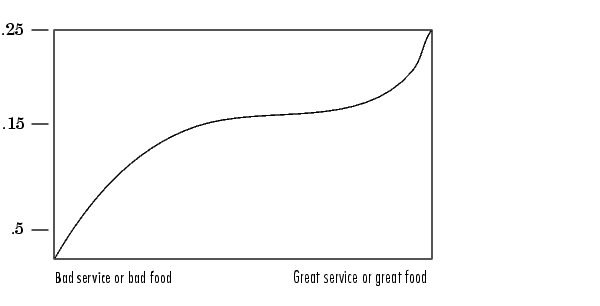

| Fuzzy Logic Toolbox |   |
Getting Started
We'll start with a basic description of a two-input, one-output tipping problem (based on tipping practices in the U.S.).
The Basic Tipping Problem. Given a number between 0 and 10 that represents the quality of service at a restaurant (where 10 is excellent), and another number between 0 and 10 that represents the quality of the food at that restaurant (again, 10 is excellent), what should the tip be?
The starting point is to write down the three golden rules of tipping, based on years of personal experience in restaurants.
2. If the service is good, then tip is average.
3. If the service is excellent or the food is delicious, then tip is generous.
We'll assume that an average tip is 15%, a generous tip is 25%, and a cheap tip is 5%. It's also useful to have a vague idea of what the tipping function should look like.

Obviously the numbers and the shape of the curve are subject to local traditions, cultural bias, and so on, but the three rules are pretty universal.
Now we know the rules, and we have an idea of what the output should look like. Let's begin working with the GUI tools to construct a fuzzy inference system for this decision process.
 | Building Systems with the Fuzzy Logic Toolbox | The FIS Editor |  |